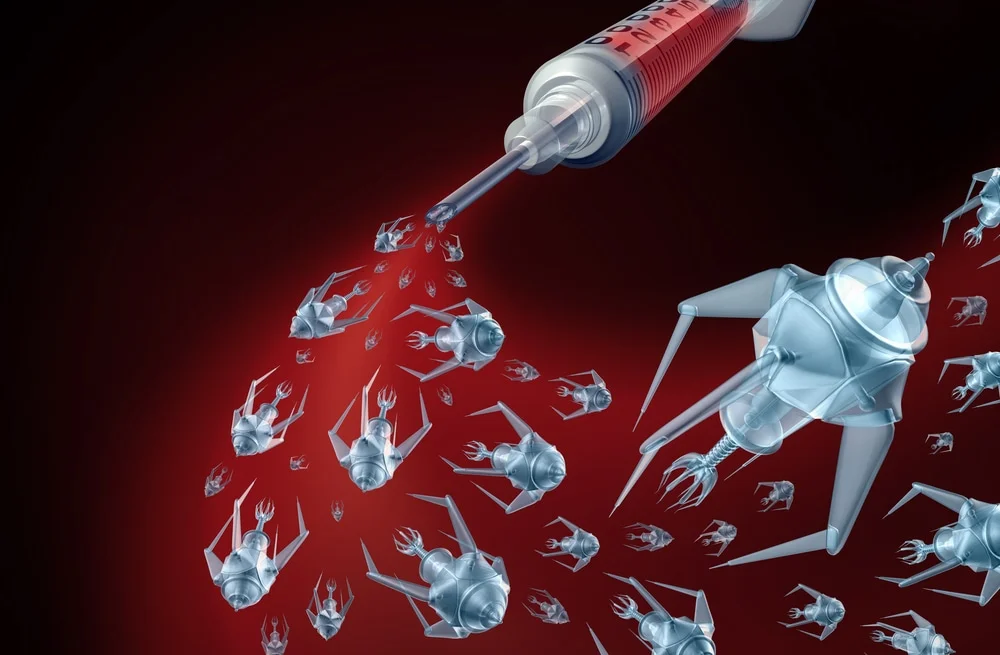Nanotechnology has revolutionized the landscape of modern medicine, offering unprecedented advantages through the utilization of nanoparticles. These minuscule structures, typically ranging from 1 to 100 nanometers in size, possess unique properties that enable enhanced therapeutic efficacy, targeted drug delivery, and innovative diagnostic techniques. This article delves into the diverse advantages of nanoparticles in modern medicine, highlighting their transformative impact across various medical disciplines.
Understanding Nanoparticles
Nanoparticles are at the forefront of nanoparticles advantages in modern medicine, owing to their distinctive physical, chemical, and biological properties. These tiny structures can be engineered from a variety of materials including metals (such as gold, silver), lipids, polymers, and quantum dots. Their small size facilitates interaction at the cellular and molecular levels, enabling precise manipulation for therapeutic and diagnostic purposes.
Key Properties of Nanoparticles
- Size and Surface Area: Nanoparticles’ small size-to-surface-area ratio allows for efficient interaction with biological entities, facilitating targeted delivery and cellular uptake of therapeutic agents.
- Surface Modification: The surface of nanoparticles can be functionalized with ligands, antibodies, or specific molecules, enhancing their biocompatibility, stability, and targeting capabilities.
- Biodegradability and Biocompatibility: Advances in nanotechnology have led to the development of biodegradable nanoparticles that minimize toxicity and enable controlled release of therapeutic payloads.
Advantages of Nanoparticles in Modern Medicine
1. Targeted Drug Delivery
One of the primary advantages of nanoparticles lies in their ability to deliver therapeutic agents directly to specific target sites within the body. Conventional drug delivery systems often suffer from poor bioavailability and off-target effects. Nanoparticles overcome these limitations by encapsulating drugs and releasing them in a controlled manner at the desired location.
For instance, nanoparticles’ advantages are evident in cancer therapy, where they can selectively accumulate in tumor tissues through the enhanced permeability and retention (EPR) effect. Functionalized nanoparticles can carry chemotherapeutic drugs or RNA interference (RNAi) molecules to cancer cells, minimizing damage to healthy tissues and improving treatment outcomes.
2. Enhanced Imaging and Diagnostics
Nanotechnology has revolutionized medical imaging modalities by providing contrast agents with superior sensitivity and resolution. Nanoparticles functionalized with imaging agents like fluorescent dyes, quantum dots, or magnetic nanoparticles enable precise visualization of anatomical structures, pathological changes, and disease progression.
In diagnostic medicine, nanoparticles play a crucial role in enhancing the accuracy of techniques such as magnetic resonance imaging (MRI), computed tomography (CT), and ultrasound. These nanoparticle advantages agents improve the detection of tumors, cardiovascular disorders, and neurological conditions, enabling early intervention and personalized treatment planning.
3. Controlled Release Systems
Nanoparticles offer versatile platforms for the controlled release of therapeutic compounds, hormones, and vaccines. By modulating factors such as nanoparticle composition, size, and surface characteristics, researchers can design delivery systems that release payloads in response to specific physiological cues or external stimuli.
This capability is particularly advantageous in chronic disease management, where sustained drug release can maintain therapeutic levels over extended periods, reducing dosing frequency and improving patient compliance. Moreover, nanoparticle-based vaccines hold promise for enhancing immune responses and achieving targeted antigen delivery, crucial for combating infectious diseases and emerging pathogens.
4. Regenerative Medicine and Tissue Engineering
In regenerative medicine, nanoparticle advantages are leveraged to promote tissue regeneration and repair. Nanomaterials such as hydrogels, scaffolds, and nanoparticles loaded with growth factors or stem cells facilitate controlled cellular interactions and tissue regeneration at injury sites.
For example, nanotechnology-enabled scaffolds mimic the extracellular matrix’s structure and bioactivity, providing a supportive environment for cell adhesion, proliferation, and differentiation. These biomimetic approaches hold immense potential for treating musculoskeletal injuries, cardiac defects, and neurological disorders, advancing the field of tissue engineering towards personalized regenerative therapies.
Challenges and Future Directions
Despite the promising nanoparticle advantages in modern medicine, several challenges persist. Concerns regarding nanoparticle toxicity, long-term biocompatibility, and regulatory approval processes require meticulous evaluation and standardization. Researchers continue to explore novel nanomaterials, safer synthesis methods, and comprehensive toxicity assessments to address these concerns and optimize clinical translation.
Looking forward, the future of nanoparticles in modern medicine holds exciting prospects for personalized medicine, disease prevention, and healthcare innovation. Collaborative efforts among scientists, clinicians, regulatory agencies, and industry stakeholders will be essential in harnessing the full potential of nanotechnology to improve patient outcomes, redefine treatment paradigms, and shape the future of healthcare delivery.
Conclusion
In conclusion, nanoparticles advantages represent a cornerstone of modern medicine’s evolution, offering transformative benefits across therapeutic, diagnostic, and regenerative applications. From targeted drug delivery and enhanced imaging capabilities to advances in regenerative medicine and controlled release systems, nanoparticles continue to redefine the boundaries of medical science and patient care.
As technological advancements and interdisciplinary collaborations propel nanotechnology forward, the integration of nanoparticles into clinical practice promises to unlock new possibilities for precision medicine and personalized healthcare solutions. By embracing the advantages of nanoparticles in modern medicine, we embark on a journey towards a healthier future, where innovative therapies and diagnostics pave the way for improved quality of life and enhanced well-being worldwide.





